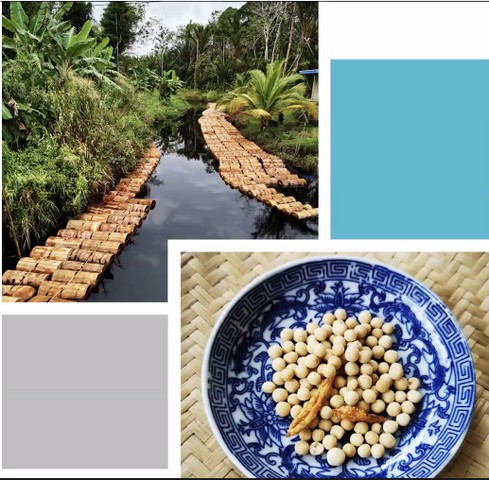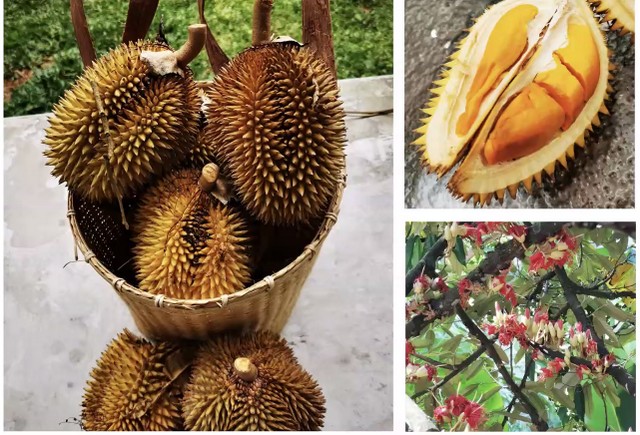The Sarawak’s Exotic Food Heritage webinar on 19th May 2022 is part of the Heritage of Malaysia Trust (BWM) talk series which highlights some of the exotic food found in Sarawak.
Here are some fun facts that you may not be familiar with about Sarawak’s exotic and delicious food and ingredients as highlighted by the speaker, Datin Dona Drury Wee, who is the chairperson of the Culinary Heritage and Arts Society Sarawak (CHASS).
Rice
Sarawak is home to a variety of rice or beras.
This includes Bario Beras Merah, Bario Beras Kabah, Simunjan Beras Wangi, Beras Bario Beras Wangi, Beras Bario Hitam and Beras Bario Putih.

It is also said that Sarawak aromatic rice is ranked to be one of the most expensive rice in the world market because it is difficult to produce.
Rice is also used ceremony and celebrations such as miring, but one of the most popular usages is to make rice wine or tuak.
In making tuak, there are a string of rules that tuak makers must follow. This includes no gossiping, not speaking in loud voices and women in their period are prohibited from participating in tuak-making or it will spoil the tuak.
Pepper
In Sarawak, we have two types of pepper; black and white pepper.
But do you know how each of them is produced?
Black pepper is made drying the pepper under the sun.
White pepper on the other hand is made by soaking the black pepper in water and rub of the skin to get the white interior.
White pepper cost more than black pepper due to its longer process in producing them.
Malaysia is the top five producers of pepper in the world, where Sarawak is responsible for 98 per cent of the country’s production of pepper.
Sago
Many knows sago as a great source of protein that can be used to make varieties of local desserts such as sago pudding, kuih sago and more.

But, do you know that it can also be used in textile production, known as ‘batik linut’?
Made popular from Tellian, Mukah, the textile is made using sago flour (linut) to make pattern designs on batik, where linut is used to block out the dye in batik design.
Gula apong
Similar to gula Melaka, gula apong gives a sweet and slightly salty taste when added to any dishes as is described as describe as having similar taste to salty caramel.
Gula apong is made from the sap of a palm tree that grown abundantly and naturally in mangrove along the coastline of Sarawak.
As it is found to inhabit brackish water in the mangrove, this gives gula apong its salty taste.
Assam payak or buah maram
The skin of assam payak or also known as buah maram somehow resembles snake scales, but when we peel off the skins, we are left with fleshy and soft pulp on the inside.

Typically, assam payak is used in many dishes due to its sour taste.
Terung assam
Terung assam is known and deliciously sour dish in Sarawak.
A few years ago, one kilo of terung assam cost only a few ringgits.
However now, one kilo can now range from RM13 to RM16 per kilo, which consist only three pieces of terung assam!
However, terung assam has a deep history in the Iban culture where Iban men will engrave terung assam tattoo on their shoulders.
Terung assam or also known as bungai terung represents the ‘bejalai’ (journey or explore) culture in pursuit of knowledge and wisdom.
It can also represent the beginning of new life and freedom.
Ferns (Pucuk paku and midin)
Sarawak has a variety of organic jungle ferns which includes pucuk paku, midin and paku kubuk.

It is known to grow wildly and naturally in the jungle of Sarawak.
The jungle fern can be cooked in various methods including using belacan, Chinese wine and garlic as well as in kerabu style.
Dabai
Known as the Sarawak black olive, dabai can range for RM20 to RM50 per kilo.
The black lustrous fruit is simply prepared by soaking them in warm water for about half an hour.
Once the flesh softens, you can eat it with soy sauce and salt. Dabai has a creamy texture and a taste that is similar to avocado.
Dabai is known to be costly because it is grown in the interior and due to the cost of transportation. However, many would not mind it being expensive as dabai is a hot item during its season.
Durian
You either love it or hate it.

The durian fruit sparks many debates across the globe due to its distinctive smell.
While many know durian for its smell and creamy flesh, but do you know that the flower from the durian tree can also be consumed?
During durian season in Sarawak, the flowers are collected and the pollen removed.
The locals usually prepare the durian flower dish by blanching it and frying it with sambal belacan or be made in kerabu style dish.
Jungle fruits
Sarawak is home to a variety of exotic fruits from the jungle.
This includes buah tampoi, buah tarap, buah raba, buah rampai and buah engakalak.

The taste and texture of buah engkalak is similar to avocado and is prepared by blanching it in water and dipped in salt.
Buah mawang is known as wood mango due to its colour and can be sweet when it ripens.
Buah tarap is related to the jack fruit family. The flesh is smaller in size compare to jack fruit and has a finer texture than buah nangka.
One can actually detect the season of buah tarap when walking in the jungle as they can smell the strong sweet smell of buah tarap lingering in the air.





